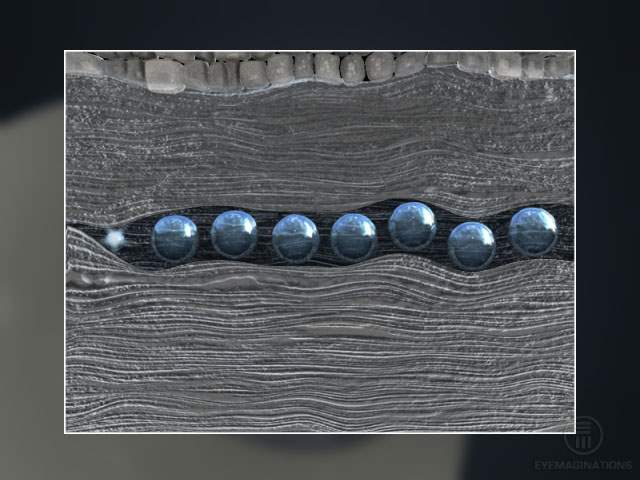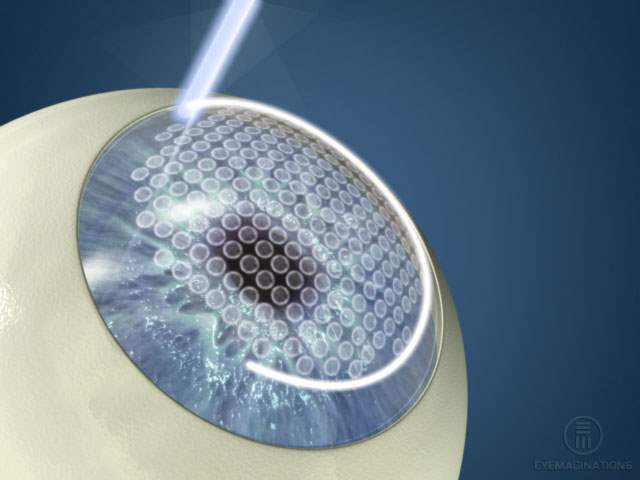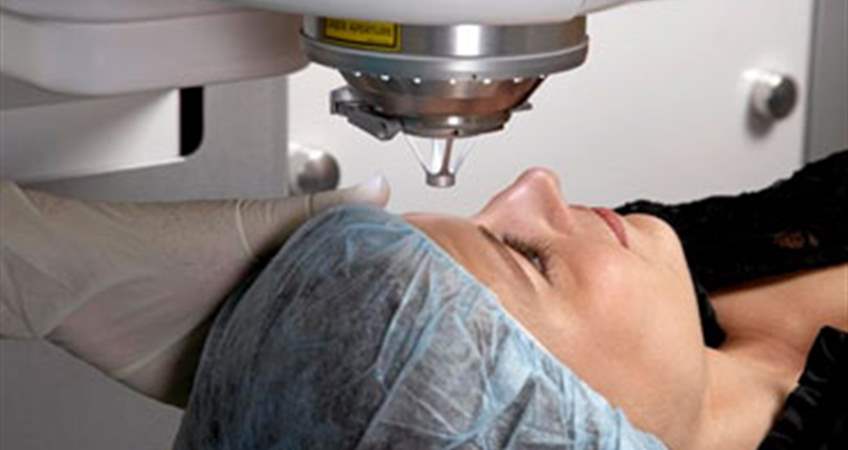Femtosecond Lasers are commonly used as well as Excimer lasers as microkeratom for lasik treatment.
A wide number of laser beams compressed into a very short period of time (15.000 points per second) is focused on the required point on the cornea with an accuracy of micron level. Totally computer-controlled femtosecond laser forms 1-3 micron bubbles containing carbon dioxide and water on the corneal layer which ensure the disintegration of tissues. The device Femtec is used in our institute.
Areas of Use
1- FLAP FORMATION WITH LASER (Incision without blades)
The first stage of the lasik method is to form a flap of 90-120 microns on the corneal layer. Flap formation had been done with mechanical microkeratom blades for years.
However, flap is formed completely by Femtosecond laser without using any blades in femtolasik method. Femtosecond laser beams form a incision in accordance with the diameter, thickness, deepness and direction planned. Therefore, it is ensured that the flap incision is done securely in the thin cornea, small eyes and the eyes that have been previously operated.
Thus, the risk of incision complications is reduced such as free flap, buttonhole, incomplete flap that are seen with keratome. The thickness of flap may deviate +- 20 microns in keratomes as it is possible to obtain the required thickness and size of flap with femtosecond laser as well as the healing is quicker due to proper flap.



2- INTRACORNEAL RING FORMATION (Femtoring)
With regards to the operation ring replacement (PLASTIC Rings-intacs) in cornea in patients with keratoconus, a tunnel is prepared in the cornea. This tunnel may be formed mechanically under general anesthesia or by femtosecond laser. The advantage of femtosecond laser is that the rings are prepared as required in terms of deepness and length in a relatively shorter period of time as well as the fact that the process is performed under local anesthesia rather than the general one.
3- ARCUATE INCISION WITH FEMTOSECOND LASER
It is the method in which arc-shaped incision is done on the axes in opposite to the cornea in people with astigmatism up to the diopter value of 3.0.
The incision was used to be done with a diamond blade or manually. However, it is done more easily and in a shorter period of time by Femtec Femtosecond laser.
Who are eligible for Arcuate Keratotomy?
- Patients with eyes with hypermetropic astigmatism which are ineligible for laser
- Patients with posttraumatic astigmatism which is ineligible for laser
- Patients with astigmatism developed following Cataract Surgery
- Patients with astigmatism developed following keratoplasty (corneal transplant)
- Femtosecond laser provides good results by performing arcuate incisions in astigmatic eyes which have been subject to Lasik, Lasek and PRK. It is a method specifically preferred for thin corneas since flap regeneration, flap removal or tissue shaving are not required.
It is an native process of excimer laser which is widely used in our institute due to the fact that it takes a shorter period of time in comparison with incision with a blade; that it ensures that the required deepness and length are obtained, and that it is a painless method which heals up quickly.
 4- KERATOPLASTY (Corneal transplant) WITH FEMTOSECOND LASER
4- KERATOPLASTY (Corneal transplant) WITH FEMTOSECOND LASER
Both the cornea which is to be transplanted and the cornea tissue which will be exchanged are cut out with Femtosecond Laser as per the required size and shape in a very short period of time. The process of incision with a blade takes a long time and it may result in post-operative development of high astigmatism in the patient or rejection of the transplanted tissue due to the improperness of the incision. Incision by laser is widely used due to the fact that it is safer minimizing the risks.
During a standard cornea transplant operation the receptor and donor corneas are cut out with a blade. Yet, this is a long and rough process. Now, the duration of cornea incision has been shortened by Femtosecond Laser and also it has been rendered possible to form the cornea and its bed to be transplanted with the laser as per the required shape. Therefore, the risks of astigmatism have been reduced following tissue rejection and transplant.
5- INTRASTROMAL PRESBYOPIA TREATMENT - INTRACOR
This method of treatment is a new method performed with femtosecond laser. It was developed by Dr. Ruiz in 2007 in Colombia. At the beginning of 2008, Dr. Sinan Göker began to apply it. FEMTEC femtosecond laser used for this treatment is the only laser suitable for the treatment.
Intrastromal presbyopia treatment is performed without cutting out the cornea and thinning the corneal tissue. Therefore, the duration for this therapy is 20 seconds. It does not have risks as infection and dry eye. It may also be applied in thin and dry eyes securely.
Shortly after the therapy, the patient gets back to one's home and continues to the normal life.
The other advantages of this method are that they could be applied in both eyes un other methods and it improves near sight without deteriorating the distance sight.
It has been applied in 300 patients so far with a success rate of 80% for which the results were monitored to be permanent as consequence of a follow-up of 1.5 years.
Other Methods of Refractive Treatment
Fakik Intraocular Lens (Fakik IOL)
The operation of intraocular lens replacement may be performed for the eyes that are not eligible for laser in case the eye structure is considered as suitable.
They are the lenses replaced in front of or behind the iris (the colored part) intraocularly instead of contact lenses. It is an native method of laser we apply in the eyes which are not eligible for excimer laser techniques due to thin cornea or very high diopter value.
Nowadays, the lenses replaced behind the iris (ICL, ArtiFlex, etc.) are used widely.
 How is the treatment performed?
How is the treatment performed?
The eye pupil is enlarged or minimized before the operation with drops as per the lens type and anesthetic drops are used to narcotize the eye surface. The lens is folded being placed into the eye through a small incision on the cornea. Rarely, incision is replaced by a suture.
Following the process that takes totally 10 minutes the patient is ready to go home with the eye covered. The next day, the dressing is removed.
Risks and Complications:
Fairly rare.
- Increased intraocular pressure (Eye Tension)
- Infection
- Belated development of cataract
- Retina Decollement
Refractive Lens Exchange
If laser can not be applied in the eyes of patients who are not very young, the lens of the patient is removed and monofocal (only for distance sight) or multifocal (distant - near) intraocular lens is replaced as in cataract operation.
 Türkçe
Türkçe English
English
 German
German
 Spanish
Spanish


















